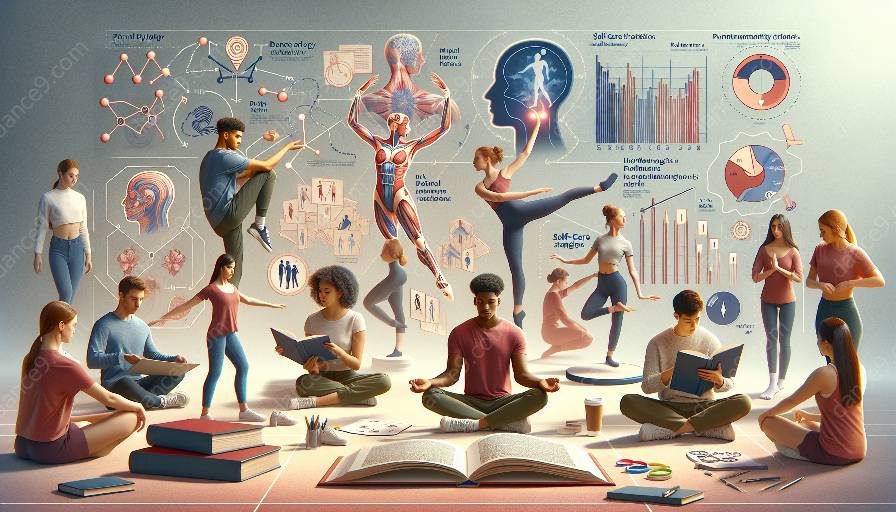Dance is a physically demanding profession that requires proper warm-up and cool-down routines for maintaining dancers' physical and mental health. In this article, we will explore the importance of these routines and their impact on dancers' well-being and performance, while also highlighting self-care strategies for dancers.
Importance of Warm-Up and Cool-Down Routines
Proper warm-up and cool-down routines are essential for preparing dancers' bodies for physical exertion and aiding in the recovery process after intense activity. Warm-up exercises help increase blood flow to the muscles, improve flexibility, and reduce the risk of injury during dance performances. On the other hand, cool-down exercises help the body return to a resting state, prevent muscle soreness, and promote muscle recovery.
Impact on Physical Well-Being
Engaging in appropriate warm-up and cool-down routines significantly contributes to dancers' physical well-being. A structured warm-up routine can improve joint mobility, enhance muscle elasticity, and increase overall body temperature, which prepares the body for the demands of dance movements. Additionally, cool-down exercises facilitate the removal of metabolic waste products from the muscles, reducing the likelihood of cramps and soreness.
Enhanced Performance
Proper warm-up and cool-down routines can directly impact dancers' performance. By adequately warming up their bodies, dancers improve their coordination, balance, and agility, leading to more precise and controlled movements during performances. Similarly, a thorough cool-down routine enables dancers to recover more efficiently, allowing them to sustain their energy levels and perform with greater ease and fluidity.
Self-Care Strategies for Dancers
As part of a comprehensive self-care regimen, dancers should prioritize incorporating effective warm-up and cool-down routines into their daily practice. Additionally, mindfulness techniques, such as meditation and deep breathing, can help dancers manage performance-related stress and maintain their mental well-being. Adequate hydration, balanced nutrition, and sufficient rest also play crucial roles in supporting dancers' overall health.
Physical and Mental Health in Dance
The intersection of physical and mental health in dance is a critical consideration for dancers. Properly executed warm-up and cool-down routines not only contribute to dancers' physical health but also have a positive impact on their mental well-being. The discipline and focus required to perform these routines can promote mental clarity and concentration, contributing to a balanced mind-body connection.
Conclusion
In conclusion, proper warm-up and cool-down routines play a vital role in maintaining dancers' physical well-being and optimizing their performance. By integrating these routines into their dance practice and embracing self-care strategies, dancers can nurture both their physical and mental health, ultimately enhancing their overall experience in the art of dance.


































